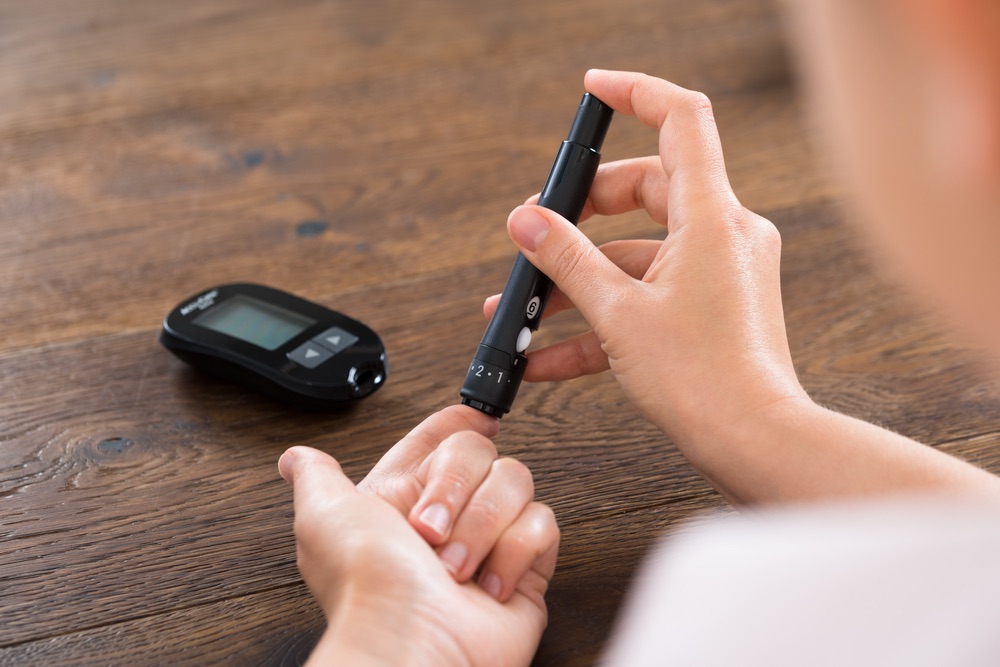How to use Apple Watch Blood Oxygen Sensor, and What It’s Good For
페이지 정보
작성자 Dorie 작성일25-09-08 03:09 조회4회 댓글0건관련링크
본문
The blood oxygen sensor featured in Apple Watch Series 6 and 7 is "not meant for medical use," Apple says. That seems odd, BloodVitals review considering that low blood oxygen is a serious medical condition. If the watch’s monitor is not for BloodVitals review medical use, then what exactly is it for? On this publish, BloodVitals review we’ll take a look at what blood oxygen is, how Apple Watch measures it, how the device compares to medical-grade alternatives, and BloodVitals review what you can really use it for. What's Blood Oxygen and why does it matter? The Blood Oxygen app on Apple Watch Series 6 and 7 checks your oxygen saturation level. This is sometimes informally referred to as "sats." It’s a measure of how much oxygen your blood is carrying from your lungs to the rest of your physique. Together with the nutrients you eat, oxygen offers the gas that powers actually every part your physique does: from moving your muscles, to rising your toenails, and even studying Cult of Mac.
 In healthy adults, blood oxygen saturation is often between 95% and BloodVitals review 100%. If it goes beneath this stage, your body won’t be getting all of the oxygen it needs to function appropriately. This condition is called hypoxemia, BloodVitals SPO2 and it’s normally accompanied by shortness of breath. How does Apple Watch measure blood oxygen saturation? Oxygen is transported in your blood utilizing a protein called hemoglobin in pink blood cells. When there’s plenty of oxygen, it seems to be shiny pink. Because the oxygen is used up, it turns purple-blue. This is the reason your arteries, which carry freshly oxygenated blood out of your lungs, BloodVitals SPO2 look purple. Whereas your veins, which return the blood as soon as the oxygen is used, look blue. It’s additionally why the Apple Watch Blood Oxygen app displays animated purple and blue traces, although these look like only for decoration. Apple Watch uses a technique known as pulse oximetry to estimate how a lot oxygen your blood comprises. It does this by checking the colour of your blood.
In healthy adults, blood oxygen saturation is often between 95% and BloodVitals review 100%. If it goes beneath this stage, your body won’t be getting all of the oxygen it needs to function appropriately. This condition is called hypoxemia, BloodVitals SPO2 and it’s normally accompanied by shortness of breath. How does Apple Watch measure blood oxygen saturation? Oxygen is transported in your blood utilizing a protein called hemoglobin in pink blood cells. When there’s plenty of oxygen, it seems to be shiny pink. Because the oxygen is used up, it turns purple-blue. This is the reason your arteries, which carry freshly oxygenated blood out of your lungs, BloodVitals SPO2 look purple. Whereas your veins, which return the blood as soon as the oxygen is used, look blue. It’s additionally why the Apple Watch Blood Oxygen app displays animated purple and blue traces, although these look like only for decoration. Apple Watch uses a technique known as pulse oximetry to estimate how a lot oxygen your blood comprises. It does this by checking the colour of your blood.
To measure this, a purple gentle shines against the pores and skin of your wrist and a sensor detects the light mirrored back. How accurate is Apple Watch Blood Oxygen sensor? Probably the most accurate solution to measure blood oxygen saturation is with a sample of blood from your arteries. This is known as arterial oxygen saturation or SaO2. But you want a physician or nurse to take the sample, and a lab to process the results. Apple Watch, like all pulse oximeters, doesn't take a look at your arteries. Instead, it measures one thing slightly different: BloodVitals SPO2. The "p" stands for peripheral, as a result of it appears to be like at capillaries - tiny blood vessels at the periphery of your physique. That is like monitoring automotive visitors that comes off an exit ramp to determine how busy the freeway is. SpO2 and SaO2 are similar metrics, but have totally different medical purposes. SaO2 is used for diagnosing anemic circumstances, while BloodVitals SPO2 is used for steady monitoring, during surgery and emergency care.
Why isn’t Apple Watch’s Blood Oxygen sensor medical-grade? While units that measure SpO2 have important medical applications, they are usually clipped onto the tip of a finger, BloodVitals review not wrapped round your wrist. Finger-based mostly pulse oximeters shine a gentle through your finger to a sensor on the opposite facet. This is named transmissive pulse oximetry. That’s not potential on the wrist, because it’s is too thick and bony for gentle to pass by way of. So instead, Apple Watch uses reflectance pulse oximetry. It measures mild reflected off the wrist. Recent analysis found "no important variations between the Apple Watch and business oximeter devices for … BloodVitals SPO2." But research from 2016 found that reflectance pulse oximetry "presents challenges with regard to clinical use." In particular, the exact position of the sensor is important. And if you progress your wrist, it affects the results. Other factors can also affect the accuracy of pulse oximeters.
댓글목록
등록된 댓글이 없습니다.
